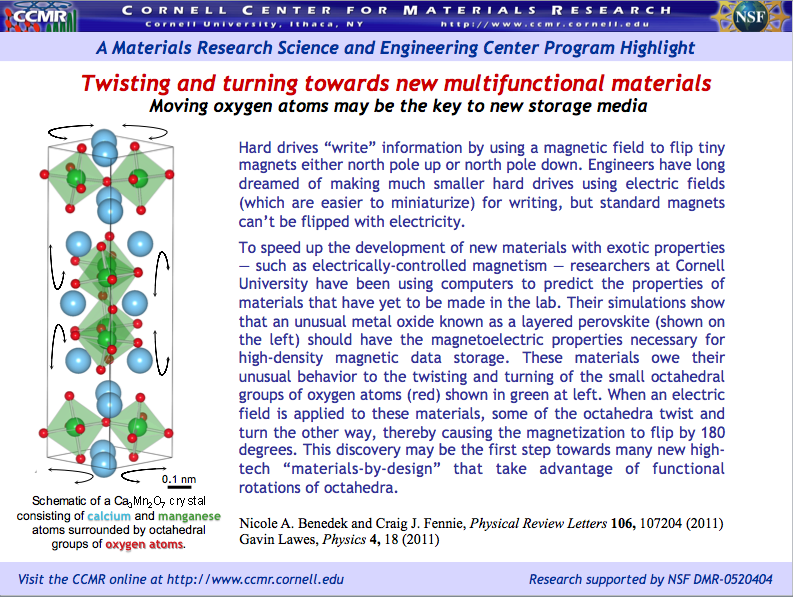
Moving oxygen atoms may be the key to new
storage media
Hard drives "write" information by using a magnetic field to flip tiny magnets either north pole up or north pole down. Engineers have long dreamed of making much smaller hard drives using electric fields (which are easier to miniaturize) for writing, but standard magnets can’t be flipped with electricity. To speed up the development of new materials with exotic properties — such as electrically-controlled magnetism — researchers at Cornell University have been using computers to predict the properties of materials that have yet to be made in the lab. Their simulations show that an unusual metal oxide known as a layered perovskite (shown on the left) should have the magnetoelectric properties necessary for high-density magnetic data storage. These materials owe their unusual behavior to the twisting and turning of the small octahedral groups of oxygen atoms (red) shown in green at left. When an electric field is applied to these materials, some of the octahedra twist and turn the other way, thereby causing the magnetization to flip by 180 degrees. This discovery may be the first step towards many new high-tech "materials-by-design" that take advantage of functional rotations of octahedra.